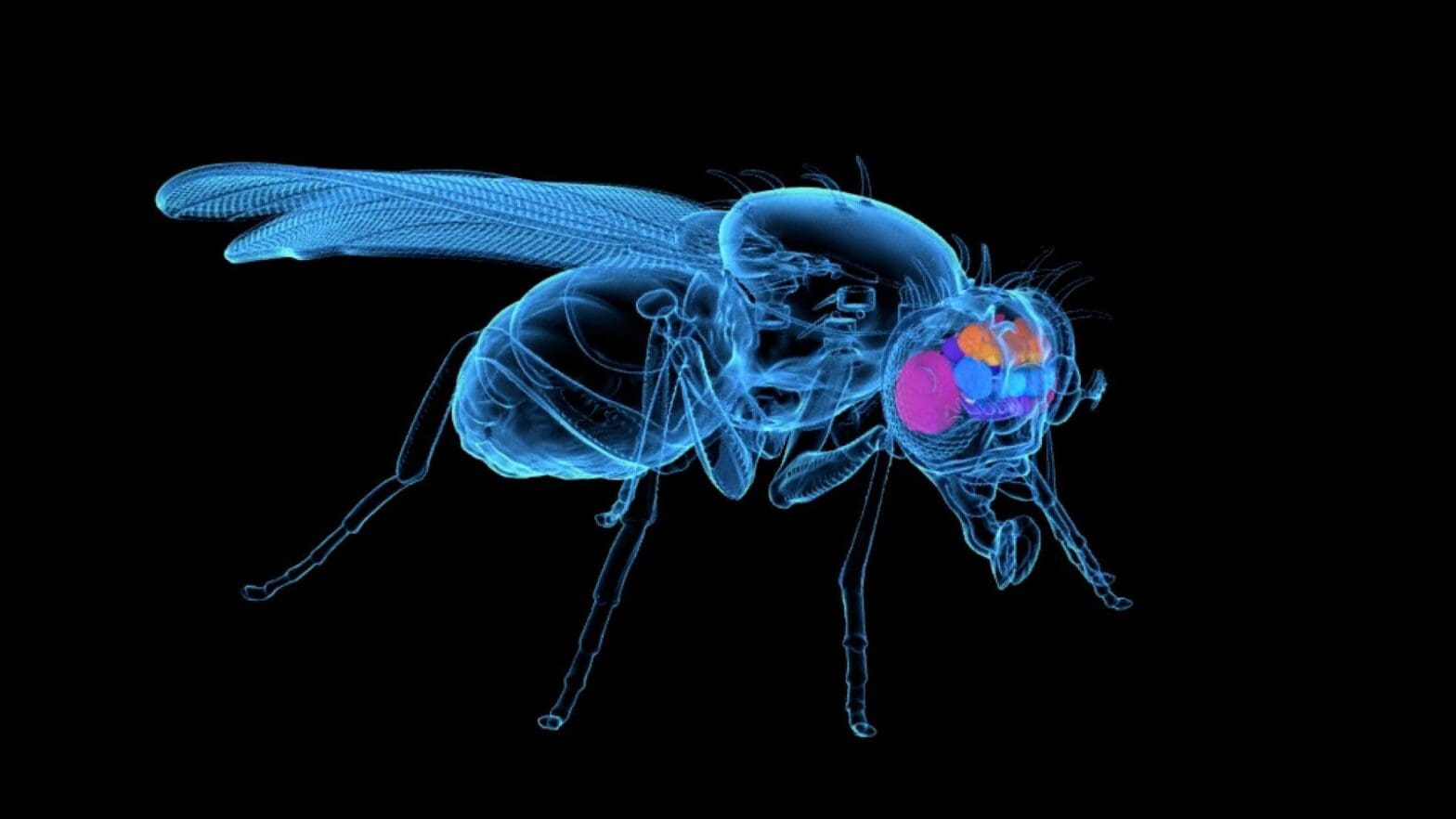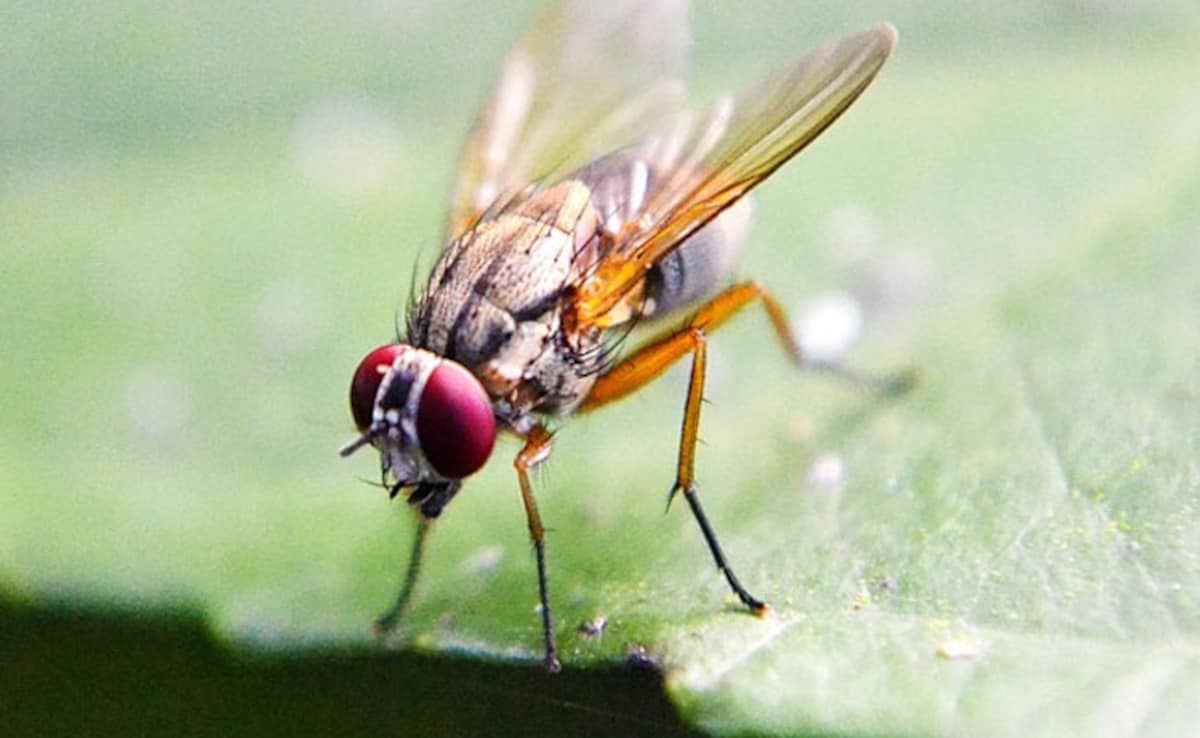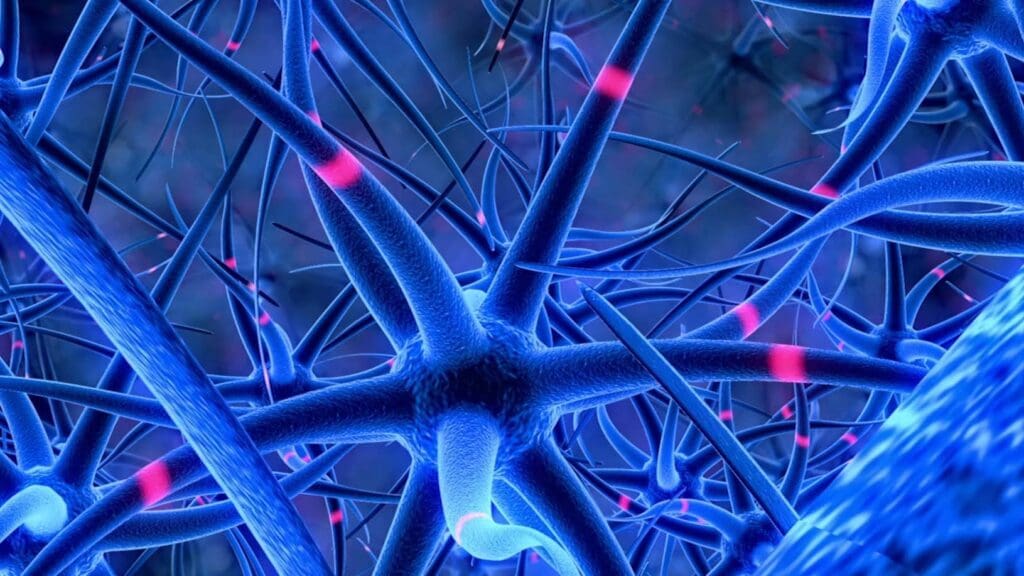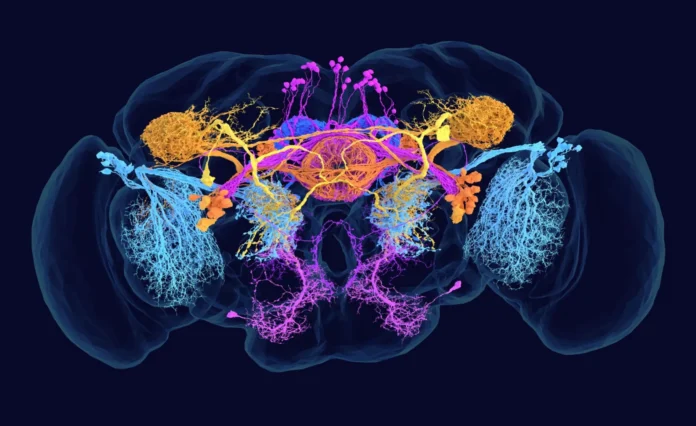In a groundbreaking achievement, researchers have successfully mapped the entire connectome of an adult fruit fly brain, marking a monumental step in neuroscience. This feat, achieved by the FlyWire team at Princeton University, provides a detailed three-dimensional map of the brain’s neurons and synaptic connections, unlocking new possibilities for understanding complex neural networks and potentially paving the way for mapping human brains.
Why Fruit Flies Are The Perfect Model?
Fruit flies, despite their small size, are incredibly complex creatures. They can perform intricate tasks such as flying, forming memories, and detecting dangers. These behaviors are orchestrated by a brain containing around 140,000 neurons, a number significantly higher than the 300 neurons in nematode worms but far fewer than the billions found in human brains. This manageable complexity makes fruit flies an ideal subject for connectome research.
Additionally, fruit flies are one of the most studied organisms in the scientific world, offering a wealth of prior knowledge to build upon. Their importance in genetic and behavioral studies has long been established, and this new achievement in brain mapping adds another dimension to their utility.

How The FlyWire Team Achieved This Feat?
The connectome was constructed using previously abandoned data collected by the FlyEM project at the Howard Hughes Medical Institute. In 2018, this data was deemed too complex to analyze with the existing artificial intelligence (AI) tools. However, Mala Murthy and Sebastian Seung from FlyWire revived the project with advanced AI software and support from the BRAIN Initiative, a U.S. government-backed neuroscience program.
Their team meticulously analyzed over 21 million high-resolution images of a female fruit fly brain, identifying 139,255 neurons and mapping approximately 54.5 million synaptic connections.
The Cutting-Edge Techniques Behind The Mapping
Creating a connectome requires breaking down a brain and rebuilding it in a digital model. This involves:
- Electron Microscopy: Brain tissue was sliced into thin layers, and each layer was imaged using electron microscopes.
- AI-Powered Reconstruction: Advanced software was used to trace neurons and identify synaptic connections across slices, reconstructing the brain’s architecture in a digital format.
The project relied on data generated through two methods by FlyEM: gallium-ion beam milling and diamond knife slicing. FlyWire’s team combined these data sets, proving that new AI advancements could tackle previously insurmountable challenges.
Insights Gained From The Fly Brain Connectome
The FlyWire project uncovered a trove of information about the fruit fly brain, including:
- Neuron Types: The brain contains 8,577 distinct types of neurons.
- Axon Length: The combined length of axons—neuron projections that transmit signals—is 149.2 meters.
- Optic Lobe Discoveries: The team identified new neuron types in the fly’s optic lobes, revealing circuits responsible for processing motion, objects, and colors.
This comprehensive mapping allows researchers to study the neural circuitry as a whole, offering insights into how the brain processes information and coordinates behavior.

Implications For Human Neuroscience
The successful mapping of a fruit fly brain serves two primary goals in neuroscience:
- Scaling Up Connectome Technology: The techniques and AI tools refined in this project can be applied to larger and more complex brains, including those of mice and eventually humans.
- Modeling Human Brains: Although fruit flies and humans are evolutionarily distant, the mapping provides a foundation for understanding fundamental neural mechanisms that could be relevant to human cognition and disease.
Challenges And Ethical Considerations
Mapping a human brain remains a monumental challenge. The human brain contains over 86 billion neurons and trillions of synapses, making the scale of the task daunting. Furthermore, ethical considerations about using human tissue and experimentation add complexity to the endeavor.
However, advancements in AI and microscopy continue to drive costs down, similar to the trajectory of the Human Genome Project. Experts estimate that a complete mouse brain connectome could be mapped within a decade, potentially opening the door to human brain mapping.

Comparative Connectomics: A New Frontier
The study of connectomes across different species offers unique insights into the evolution of neural systems. Despite their evolutionary divergence, fruit fly and vertebrate brains share some functional similarities, suggesting that natural selection has independently arrived at optimal solutions for processing information.
This comparative approach could inspire innovations in artificial intelligence, as understanding biological information processing might lead to the development of smarter, more efficient AI systems.
The Future Of Connectomics
The success of the FlyWire project demonstrates the power of interdisciplinary collaboration, with contributions from 146 laboratories and even citizen scientists. As technology improves, the ability to map increasingly complex brains will transform our understanding of neuroscience and open new avenues for medical and technological advancements.
The fruit fly connectome is not just a scientific milestone—it is a glimpse into the future of brain research and a testament to humanity’s drive to unravel the mysteries of the mind.

